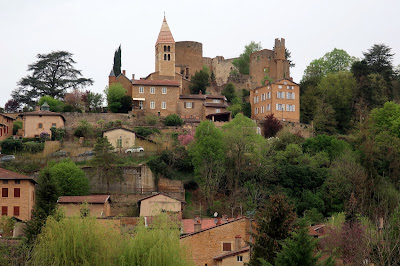The Waste Not Want Not Cookbook
“Imagine going to the grocery store and leaving with three bags of food, then dropping one in the parking lot and driving away. We all do the equivalent of that every week of our lives.”
Almost 40% of the food produced never gets to anyone’s plate. When Cinda Chavich, Canadian food and travel writer, became aware of the problem she was inspired to write a cookbook that would help people to eat well while wasting less food.
I try hard not to waste food but I still do, so I was eager to read The Waste Not, Want Not Cookbook and see what I could do better.
Using the Cookbook
The book’s format is great. Cinda Chavich says that the easiest way to reduce food waste is by using up whatever is in your fridge. The book is divided into three sections with the types of food that people usually buy – fruit and vegetables, staples, proteins.
If you don’t know what to do with stale bread or an abundance of lettuce or kale, just flip to the page for that ingredient and you’ll find a wealth of information and recipes. As a vegetarian, I focussed my attention on the first two sections as the Weekly Feasts involve cooking once and then turning the leftover meat or fish into a variety of new dishes to avoid boredom.
The introductory page for each food item provides tips for buying, storing and serving, along with some simple but often unexpected ways to turn a surplus into a flavourful dish. This is followed by a number of different recipes.
Here are just a few of the helpful ideas I picked up on leafing through the book.
Buy
If you’re buying bananas, don’t buy the ones that are grey. They’ve been chilled and won’t ripen.
Pears ripen better off the tree, so buy them under-ripe and wait until the stem end is slightly soft before eating.
Store
When you buy a bunch of asparagus, break off the tough ends and store the spears standing upright in an inch of water in a jar in the refrigerator for up to 3 days.
A list of basic storage guidelines addresses the question of whether food is still safe to eat if it’s past the sell-by or best-before date. Don’t throw out the yogurt; it’s still good for 7-10 days after the best-before date, opened or unopened. And butter is good for 4 weeks after the best-before date.
Serve
The serving suggestions are great as they are simple and usually quick. Turn leftover mushrooms into a sauce or gravy. Cut sweet butternut squash into sticks and serve raw. Add cucumbers to fruit salad or make a spicy Thai-style salad. Cook eggs inside a bell pepper ring.
Recipes
The recipes are a mix of simple ones (corn chowder, apple crisp) that are ideal for a beginner cook (e.g. your teenage son or daughter) as well as more inventive options (I’m intrigued by the recipe for Mouhammara, a Syrian red pepper and walnut spread).
Many of the recipes can be adapted to fit the ingredients you have on hand (risotto or frittata). I plan to make Lemony Lentils, a protein-packed summer salad. Instead of buying ready-made curried roti wraps, you can make your own. There’s also a recipe for a Vegetarian Nut Roast.
White Box Challenge
I plan to take the White Box Challenge and I hope you will too. When you don’t know what to make for supper, open your refrigerator, pull out three or four ingredients that need using up, add in some staples from your cupboard, and make a dish. It may be something straightforward like soup or pasta, or it may be something completely new. It’s our chance to have fun making up our own recipes while also avoiding waste.
I Wish
I have very little criticism of The Waste Not Want Not Cookbook. I would, however, have liked a greater emphasis on buying local, seasonal food. I know from personal experience that if you buy straight from the producer, the food is fresher and will keep longer.
I would also have liked to see more mention of alternate protein sources. Beans and lentils are cheap, grown locally and can be used in so many different ways. And dry pulses can be stored almost indefinitely.
Additional Information
Cinda Chavich recommends a number of online sources for additional information about food waste.
The Love Food Hate Waste Metro Vancouver website has tips (wrap banana stems with plastic to slow ripening), recipes (parmesan potatoes) and a storage guide. Some of the best tips are posted by individuals.
The Natural Resources Defense Council’s website has a wealth of information on ensuring safe, sustainable food.
The National Zero Waste Council was founded by Metro Vancouver in collaboration with the Federation of Canadian Municipalities in 2013. Their goal is to address the factors that drive waste generation, including lifestyle expectations, product design and packaging.
The Waste Not, Want Not Cookbook is published by Touchwood Editions who were kind enough to send me a review copy of the book.






Comments